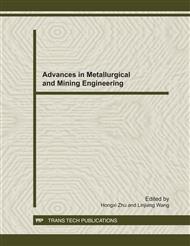p.724
p.728
p.734
p.738
p.742
p.747
p.753
p.758
p.766
Study on Double-Frequency Composed Vibrating Compaction Method Based on Resonance and Antifriction Principle
Abstract:
For improving compaction process, a method of double-frequency composed vibrating compaction was proposed, which based on resonance and antifriction principle. The method was different from the traditional variable-frequency and variable-amplitude compaction method, which has one frequency and associated amplitude. Double-frequency composed vibrating compaction method has two different frequencies and associated amplitudes simultaneously, thus enhanced resonance and antifriction of asphalt mixture, and large amplitude oscillation was prone to deep transmission of impact energy. The results showed that double-frequency composed vibrating compaction machine got higher degree of compaction than that of traditional machine with same tonnage, 2.6% higher in surface layer and 3.1% higher at the position 15 cm far from surface. Double-frequency composed vibrating compaction method was better than traditional method in concerned with the compactness in layers, and had obviously advantage of deep compaction.
Info:
Periodical:
Pages:
742-746
Citation:
Online since:
November 2011
Authors:
Keywords:
Price:
Сopyright:
© 2012 Trans Tech Publications Ltd. All Rights Reserved
Share:
Citation:


